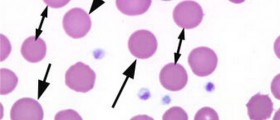
Myeloma
This hematological malignancy causes anemia. We can describe the process of development for this problem. The generating antibodies need to be fought off, so this is done by the white blood cells. The hip bones, skull, ribs, and spine are locations where the tumor of the plasma cells, which are a type of white cells, is usually found. This cell becomes cancerous since there is too much production of the antibodies. Then they enhance their number and impair the white and red blood cells and the platelets generation, which leads to the mentioned anemia. Kidney failure is something that can happen due to the gathering of the antibodies and the symptom of this problem is bleeding. This problem can be present on several locations on the bone, and so it bears the name multiple myeloma. More than 50,000 people in America have this problem right now and their life expectancy depends on several factors, like sex, race, age and the cancer stage.
Symptoms of Myeloma
Most common symptoms are bone collapse, bleeding, high blood calcium levels, sudden bone fractures (especially rib fracture), infections, severe bone pain (back pain especially), kidney problems, fatigue, anemia and weakness. Also, a patient may experience vision problems and confusion. This problem is more common among older people, but the exact cause is not known so we cannot draw any conclusions about that. Bone marrow sample test, urine test, x-ray and MRI can help in detecting this problem. If it is detected in time, there are ways in which we can control the problem. Those ways include transfusion, radiation therapy, chemotherapy, bone marrow transplantation, prevention of kidney problems, control of infections and others.
Life Expectancy
We have mentioned basic factors for determining the life expectancy, but we can also add to these factors mental and physical state of the patient. We will give you the life expectancy numbers divided by the stages of the myeloma cancer. We can also divide the stages according to the serum albumin and serum beta-2 microglobulin located in the blood. During the first stage, when the album levels are more then 3.5, a patient may live 62 months following the diagnosis. This stage also has 3.5, and less, level of beta-2 globulin levels. The 3.5-5.5 level of beta-globulin indicates the second stage, during which patients may experience 44 months of life after the diagnosis. The last, third stage has the level of beta-2 microglobulin above the 5.5. If the problem is detected during this stage, a patient will probably have 29 months to live. Remember that many factors influence the life expectancy and these numbers are not rules, but guidelines. Ways of controlling the problem have the greatest influence on the life expectancy. The effects of the steroids, thalidomide medications, chemotherapy and stem cell transplant will influence the life expectancy.

















Your thoughts on this
Loading...